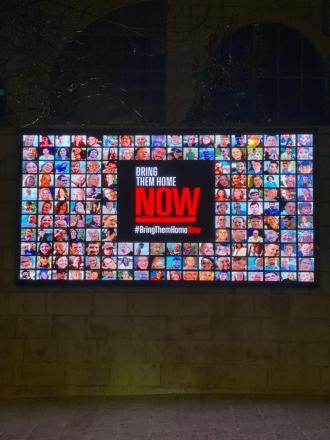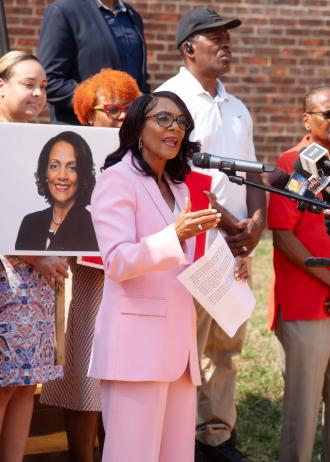UnitedHealthGroup Inc. said it expects major losses on its business through the Affordable Care Act's exchanges and will consider withdrawing from them, in the most prominent signal so far of health insurers' struggles with the health law's marketplaces.
The disclosure by the biggest U.S. health insurer, which had just last month sounded optimistic notes about the segment's prospects, will sharply boost worries about the sustainability of the law's signature marketplaces, amid signs that many insurers' losses on the business continue to mount.
UnitedHealth Group's chief executive, Stephen J. Hemsley, said it made the move, which included a downgrade of its earnings projections for 2015, amid reduced growth expectations, the expected shutdowns of the majority of the health law's nonprofit cooperative insurers, and signs that its own enrollees continue to increase their use of medical services, raising costs.
As a result, UnitedHealth said it is pulling back on marketing its exchange products, as open enrollment is currently under way for plans that will take effect in 2016. And the insurer said it is "evaluating the viability of the insurance exchange product segment and will determine during the first half of 2016 to what extent it can continue to serve the public exchange markets in 2017." UnitedHealthhad previously expanded its exchange offerings to 11 new states for 2016, and said in October it had around 550,000 people enrolled.
UnitedHealth said it was revising its 2015 earnings projection to $6 a share, from a previous range of $6.25 to $6.35. The move reflected "pressure" of $425 million, or 26 cents a share, tied to individual plans sold under the health law, it said. The $425 million includes $275 million related to the "advance recognition" of losses it expects to incur in 2016. UnitedHealthalso said it expects its 2016 earnings to be between $7.10 and $7.30 per share in 2016; previously, the company said it thought next year's earnings would be within the range of analysts' projections, then around $7.09 to $7.55.
Chris Rigg, an analyst with Susquehanna Financial Group, wrote that it was likely "this is more of an industry issue," and if the exchanges don't stabilize, he would expect UnitedHealth to "exit this business line."
UnitedHealth's announcement comes as other insurers have been sounding alarms about their exchange business, but the big insurer went considerably farther than its peers in flagging the recent rapid deterioration of its performance and raising concerns about future viability. UnitedHealthalso changed its own tone markedly from its Oct. 15 earnings call, when it said it expected "strikingly better" results on the exchanges in 2016, due partly to price increases that it said averaged in the double digits.
The impact of the insurance industry's struggles is already clear in the products currently on offer in the marketplaces, many of which are aimed at stanching a flood of red ink. For these plans, which will take effect in 2016, many insurers have raised premiums in order to cover the medical costs of enrollees, which have run higher than many companies originally projected, fueling this year's losses. Insurers have also shifted to offering more limited choices of health-care providers. The majority of the startup cooperative insurers created under the health law are slated to shut down.
Analysts say the danger is that higher rates might discourage enrollment, particularly by the younger, healthier consumers that the marketplaces need to draw in, since they are the ones that are most likely to feel they can go without insurance. That would have the effect of driving premiums even higher in the future, because insurers would need more rate increases to cover the costs of a smaller, sicker pool of enrollees. At its worst, this cycle can feed on itself, creating what the industry calls a "death spiral."
However, in the ACA's marketplaces, the impact of rate increases on consumers is blunted by federal subsidies that cover much of the cost of coverage.
The Obama administration has said it aims to have about 10 million people with paid-up coverage on the state and federal health-law exchanges by the end of 2016. But that falls well short of some earlier projections: the nonpartisan Congressional Budget Office earlier this year estimated that at least 20 million people would buy policies under the law for 2016 coverage.
In mid-October, UnitedHealth said that the exchange business was hurting UnitedHealths performance on a key measure called the medical-loss ratio—which tracks the share of premium revenue spent on patient care—but UnitedHealthstill expected its overall MLR for 2015 to be within its projected range.
David S. Wichmann, UnitedHealth's president and chief financial officer, said then that the company expected the health-law marketplaces "to develop and mature over time into a strong, viable growth market for us." The exchanges represent a small share of UnitedHealth's overall insurance enrollment.
Several other big publicly traded insurers also flagged problems with their exchange business in their third-quarter earnings. Anthem Inc. said enrollment is less than expected, though it is making a profit. Aetna Inc. said it expects to lose money on its exchange business this year, but hopes to improve the result in 2016. Humana Inc. and Cigna Corp. also flagged challenges.
A recent analysis by McKinsey & Co. found that in 2014, the first year of the exchanges, health insurers lost a total of $2.5 billion, or on average $163 per consumer enrolled, in the individual market.
There are signs that broad pattern has continued—and in some cases worsened—this year. A Goldman Sachs Group Inc. analysis of state filings for 30 not-for-profit Blue Cross and Blue Shield insurers found that their overall companywide results were "barely break-even" for the first half of 2015. Goldman analysts projected the group would post an aggregate loss for the full year—the first since the late 1980s.
The analysis said the health-law exchanges appeared to be a "key driver" for the faltering corporate results, and the medical-loss ratio for the Blue insurers' individual business was 99% in the first half of 2015—up from 91% at that point in 2014, and 82% for the first six months of 2013.
Such losses are helping to drive shifts in offerings on the exchanges, where open enrollment is currently under way. Premiums for a type of plan that is closely watched as a signal of consumer costs—the second-lowest-priced insurance product in the law's "silver" metal tier—are increasing 7.5% on average across the roughly three dozen states that rely on the federal HealthCare.gov marketplace, according to the Obama administration. Some individual increases are far sharper.
An analysis by the Robert Wood Johnson Foundation found that a number of insurers are cutting preferred-provider-organization plans, which tend to have more open access to health-care providers. Among silver-tier plans on the exchanges, only a third of 2015 PPO offerings remained the same for next year, with the rest either dropped or reduced.
UnitedHealthGroup Inc. said it expects major losses on its business through the Affordable Care Act's exchanges and will consider withdrawing from them, in the most prominent signal so far of health insurers' struggles with the health law's marketplaces.
The disclosure by the biggest U.S. health insurer, which had just last month sounded optimistic notes about the segment's prospects, will sharply boost worries about the sustainability of the law's signature marketplaces, amid signs that many insurers' losses on the business continue to mount.
UnitedHealth Group's chief executive, Stephen J. Hemsley, said it made the move, which included a downgrade of its earnings projections for 2015, amid reduced growth expectations, the expected shutdowns of the majority of the health law's nonprofit cooperative insurers, and signs that its own enrollees continue to increase their use of medical services, raising costs.
As a result, UnitedHealth said it is pulling back on marketing its exchange products, as open enrollment is currently under way for plans that will take effect in 2016. And the insurer said it is "evaluating the viability of the insurance exchange product segment and will determine during the first half of 2016 to what extent it can continue to serve the public exchange markets in 2017." UnitedHealthhad previously expanded its exchange offerings to 11 new states for 2016, and said in October it had around 550,000 people enrolled.
UnitedHealth said it was revising its 2015 earnings projection to $6 a share, from a previous range of $6.25 to $6.35. The move reflected "pressure" of $425 million, or 26 cents a share, tied to individual plans sold under the health law, it said. The $425 million includes $275 million related to the "advance recognition" of losses it expects to incur in 2016. UnitedHealthalso said it expects its 2016 earnings to be between $7.10 and $7.30 per share in 2016; previously, the company said it thought next year's earnings would be within the range of analysts' projections, then around $7.09 to $7.55.
Chris Rigg, an analyst with Susquehanna Financial Group, wrote that it was likely "this is more of an industry issue," and if the exchanges don't stabilize, he would expect UnitedHealth to "exit this business line."
UnitedHealth's announcement comes as other insurers have been sounding alarms about their exchange business, but the big insurer went considerably farther than its peers in flagging the recent rapid deterioration of its performance and raising concerns about future viability. UnitedHealthalso changed its own tone markedly from its Oct. 15 earnings call, when it said it expected "strikingly better" results on the exchanges in 2016, due partly to price increases that it said averaged in the double digits.
The impact of the insurance industry's struggles is already clear in the products currently on offer in the marketplaces, many of which are aimed at stanching a flood of red ink. For these plans, which will take effect in 2016, many insurers have raised premiums in order to cover the medical costs of enrollees, which have run higher than many companies originally projected, fueling this year's losses. Insurers have also shifted to offering more limited choices of health-care providers. The majority of the startup cooperative insurers created under the health law are slated to shut down.
Analysts say the danger is that higher rates might discourage enrollment, particularly by the younger, healthier consumers that the marketplaces need to draw in, since they are the ones that are most likely to feel they can go without insurance. That would have the effect of driving premiums even higher in the future, because insurers would need more rate increases to cover the costs of a smaller, sicker pool of enrollees. At its worst, this cycle can feed on itself, creating what the industry calls a "death spiral."
However, in the ACA's marketplaces, the impact of rate increases on consumers is blunted by federal subsidies that cover much of the cost of coverage.
The Obama administration has said it aims to have about 10 million people with paid-up coverage on the state and federal health-law exchanges by the end of 2016. But that falls well short of some earlier projections: the nonpartisan Congressional Budget Office earlier this year estimated that at least 20 million people would buy policies under the law for 2016 coverage.
In mid-October, UnitedHealth said that the exchange business was hurting UnitedHealths performance on a key measure called the medical-loss ratio—which tracks the share of premium revenue spent on patient care—but UnitedHealthstill expected its overall MLR for 2015 to be within its projected range.
David S. Wichmann, UnitedHealth's president and chief financial officer, said then that the company expected the health-law marketplaces "to develop and mature over time into a strong, viable growth market for us." The exchanges represent a small share of UnitedHealth's overall insurance enrollment.
Several other big publicly traded insurers also flagged problems with their exchange business in their third-quarter earnings. Anthem Inc. said enrollment is less than expected, though it is making a profit. Aetna Inc. said it expects to lose money on its exchange business this year, but hopes to improve the result in 2016. Humana Inc. and Cigna Corp. also flagged challenges.
A recent analysis by McKinsey & Co. found that in 2014, the first year of the exchanges, health insurers lost a total of $2.5 billion, or on average $163 per consumer enrolled, in the individual market.
There are signs that broad pattern has continued—and in some cases worsened—this year. A Goldman Sachs Group Inc. analysis of state filings for 30 not-for-profit Blue Cross and Blue Shield insurers found that their overall companywide results were "barely break-even" for the first half of 2015. Goldman analysts projected the group would post an aggregate loss for the full year—the first since the late 1980s.
The analysis said the health-law exchanges appeared to be a "key driver" for the faltering corporate results, and the medical-loss ratio for the Blue insurers' individual business was 99% in the first half of 2015—up from 91% at that point in 2014, and 82% for the first six months of 2013.
Such losses are helping to drive shifts in offerings on the exchanges, where open enrollment is currently under way. Premiums for a type of plan that is closely watched as a signal of consumer costs—the second-lowest-priced insurance product in the law's "silver" metal tier—are increasing 7.5% on average across the roughly three dozen states that rely on the federal HealthCare.gov marketplace, according to the Obama administration. Some individual increases are far sharper.
An analysis by the Robert Wood Johnson Foundation found that a number of insurers are cutting preferred-provider-organization plans, which tend to have more open access to health-care providers. Among silver-tier plans on the exchanges, only a third of 2015 PPO offerings remained the same for next year, with the rest either dropped or reduced.


















